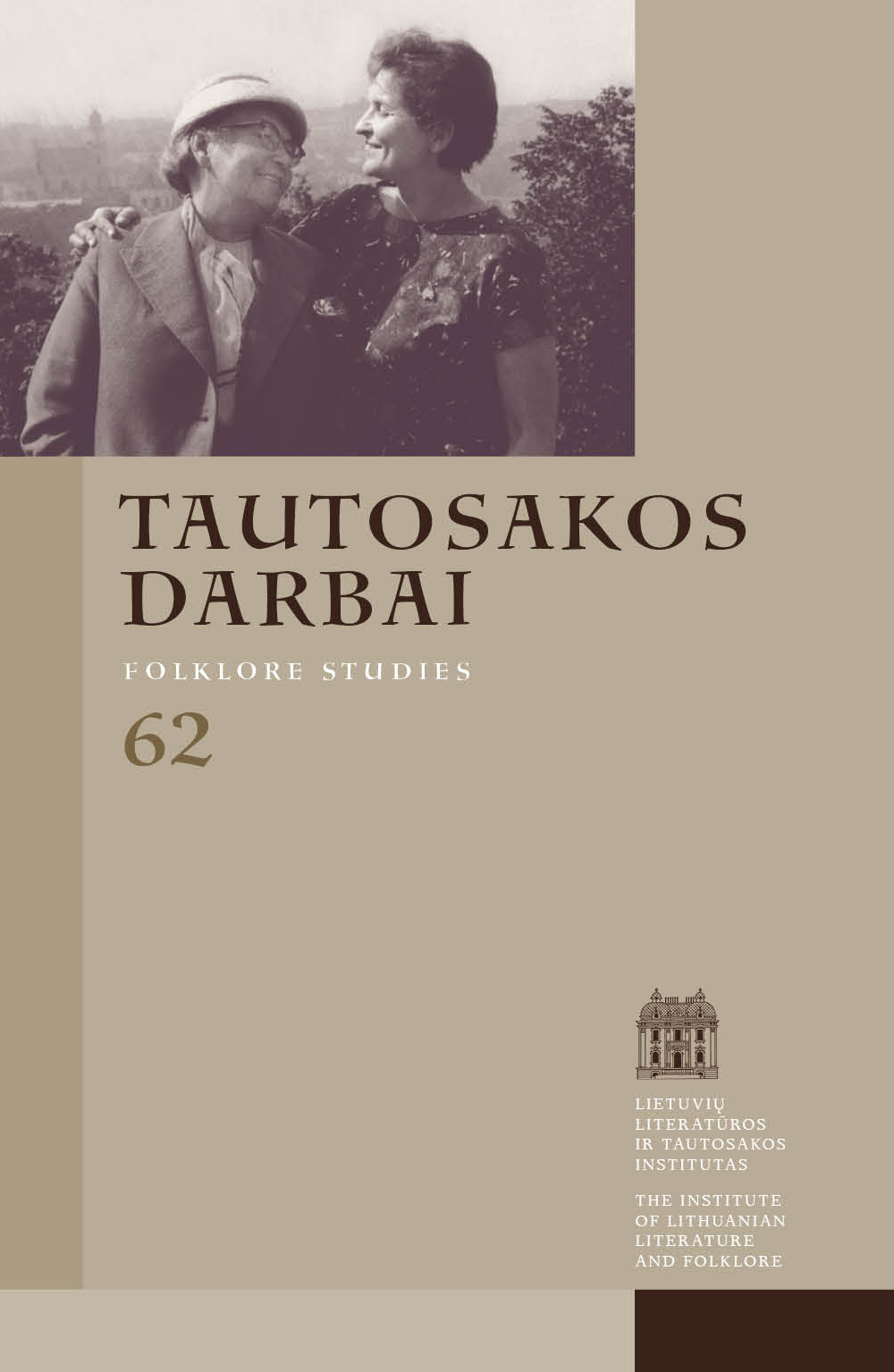Interpretation of Proverb Meaning: Theory and Practice
Abstract
When encountering the necessity to interpret a written proverb, paremiographer has to find practically applicable solutions that would not require a lengthy and detailed investigation process. Solving the issue of objectivity and subjectivity is also necessary, as well as appreciating the extent to which one can get personally involved into interpretation of proverb meaning. According to studies of proverb semantics by Lithuanian and foreign researchers, and as indicated by the recent experience accumulated in the process of editing the 3rd and 4th volumes of the series “Lithuanian Proverbs and Proverbial Phrases” it can be concluded that interpretations may be facilitated by:
1) Comments, remarks and contextual information recorded along the proverb;
2) Occasional extended variants of the proverb, supplemented with directly understandable fragments that explain the trope in the main part;
3) Analogies – comparisons to the proverbs belonging to the same semantic field or characterized by a similar structure;
4) Lexical analysis;
5) Comparisons with equivalents from other languages;
6) Folklore competence.
In order to maximize objectivity and impartiality, editors of the fundamental source edition “Lithuanian Proverbs and Proverbial Phrases” limit themselves to the recorded additional data, however large. Nevertheless, additional means of decoding the meaning are required when preparing the titles of the proverb types for the translation process. The digital space, in which the proverbs published in the source edition are stored (http://archyvas.llti.lt/ eLPP/en), is characterized by a greater freedom of interpretation because of mobility of this repository: here, an interpretation may be corrected or supplemented at any time. Therefore folklorists updating the electronical repository can rely not only on the objective semantic means in their interpretations of proverb meaning, but also on their own folklore competence, or, if possible, also on that of the older generation of researchers.
Downloads
Most read articles in this journal
- Rūta Žarskienė, Inga Vidugirytė, Asta Skujytė-Razmienė, Gražina Kadžytė, Lina Leparskienė, Vita Džekčioriūtė-Medeišienė, Dalia Zaikauskienė, Chronicle , Tautosakos darbai: Vol. 58 (2019)
- Dalia Zaikauskienė, The Actual Usage of Paremias in the Electronic Discourse: the Internet Comments , Tautosakos darbai: Vol. 47 (2014)
- Dalia Zaikauskienė, The Flowering Fences and the Greener Grass on the Other Side of Them: Reasons for Borrowing Paremias and Prerequisites for Their Adaptation , Tautosakos darbai: Vol. 58 (2019)
- Dalia Zaikauskienė, The Power of Proverbs , Tautosakos darbai: Vol. 59 (2020)
- Dalia Zaikauskienė, Profesoriaus Kazio Grigo 100-osioms gimimo metinėms skirta tarptautinė konferencija , Tautosakos darbai: Vol. 67 (2024): Tautosakos darbai
- Dalia Zaikauskienė, Kasmetinis tarpdalykinis patarlėms skirtas kolokviumas Portugalijoje , Tautosakos darbai: Vol. 66 (2023): Tautosakos darbai
- Lina Būgienė, Dalia Zaikauskienė, Foreword , Tautosakos darbai: Vol. 58 (2019)
- Dalia Zaikauskienė, Lilija Kudirkienė, The Way to Proverbs. Dalia Zaikauskienė interviewing paremiologist Lilija Kudirkienė , Tautosakos darbai: Vol. 61 (2021)




